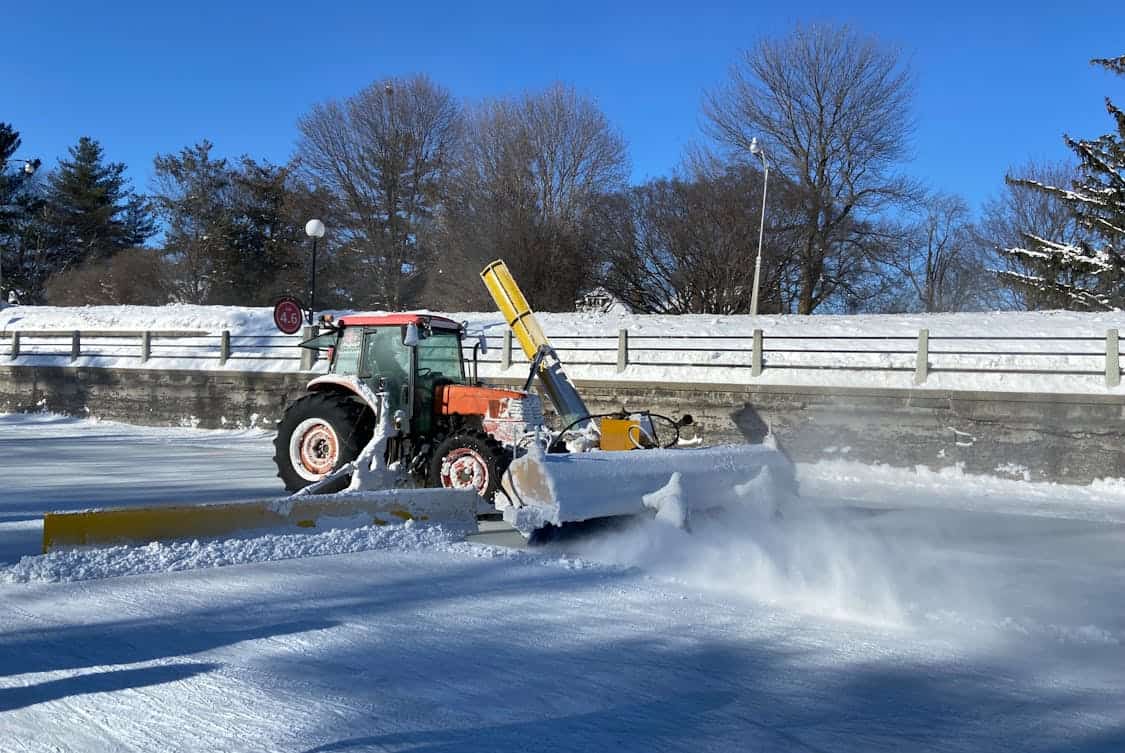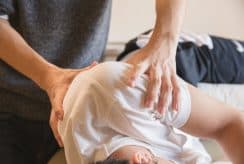Snow removal is a complex task that requires careful planning and environmental awareness. From the tools used to the legal and policy frameworks, navigating this process is critical for safety and success.
Many areas have laws requiring property owners to clear their sidewalks and entrances within a certain timeframe after a snowstorm. Failure to comply could result in costly lawsuits.
Slips and falls
Slips and falls are the most common winter accident, resulting in costly injuries and lost work time. Injuries from winter slips and falls can range from minor bruising to broken bones and concussions. Many of these injuries require medical attention and result in hefty hospital bills, missed work, and loss of wages. The CDC estimates that in the United States, medical costs for slip and fall accidents totaled $50 billion in 2014.
Icy surfaces like snow and slush pose a serious risk to pedestrians, and if these hazards are not removed quickly, they can cause people to lose their footing and fall. Falls can happen anywhere, even inside a building, and they can have devastating consequences for the victim. Falling can break bones, fracture joints, and sprain muscles. Elderly people are particularly susceptible to falling, and can face severe injuries such as hip or head trauma.
Businesses are responsible for making their entrances safer during icy conditions, and should use sand, salt, or other de-icing compounds to keep their walkways clear. These substances also prevent the formation of new ice layers, and ensure that walkways are safe for pedestrians and vehicles to travel on.
Snow removal services are often used to remove snow from sidewalks, entranceways, and parking lots around a business or commercial property. However, there are many factors that should be considered to determine the best method for clearing snow in the area. For example, plows are effective at pushing snow aside to create a path, but can leave large piles of snow behind. Shoveling is labor-intensive and requires physical strength and stamina, but can be more precise and preserve surface integrity.
In some cities, it is a legal obligation for property owners to remove snow from their sidewalks after a snowfall. This is especially true for sidewalks near hospitals and other public buildings, as well as private residences. Those who do not clear their sidewalks after a snowfall may be subject to fines.
Obstructions
The presence of snow can quickly create obstacles that are hazardous for pedestrians and vehicles. For example, ice buildup underneath snow can cause slippery conditions that are extremely dangerous to walk on, while snow-covered roofs pose serious threats like structural collapse and icicle formation. These hazards are exacerbated by the weight of heavy snowfall, making it essential to take steps to reduce accumulation. Snow removal professionals can help prevent these issues by proactively clearing areas throughout winter storms to keep walkways clear and accessible. They use a variety of tools, including hand shovels, walk behind snowblowers (or snow throwers), truck plows, skid-steers, and light-weight tractors. In addition, these professionals often employ de-icing solutions to help melt ice and provide added traction for pedestrians.
The most common method of snow removal is plowing, which involves using a plow attached to a vehicle to push snow to the side or into piles. This method is particularly effective for large areas where the speed of removal is important. However, it is not suited for delicate surfaces like sidewalks and parking lots, so it is usually combined with other methods.
In many communities, municipalities and businesses are responsible for clearing snow from sidewalks in front of or beside their buildings. Failure to do so can result in fines for building owners. It is also critical to remove snow and ice from crosswalks so that people can safely access them, especially if they are pushing strollers or wheelchairs.
Snow removal is a time-consuming and laborious process that requires physical strength and stamina to manually lift and move snow. This is why proper lifting techniques are so important, particularly when working with large amounts of wet, heavy snow. By bending at the knees and keeping the load close to the body, workers can minimize back strain and fatigue.
Cities generally have a schedule in place to ensure that all streets and sidewalks are cleared as soon as possible after a snowfall. They prioritize main roads and emergency routes first, then work their way down to neighborhoods. In some cases, homeowners and businesses can wait hours while city crews clear the streets surrounding their property.
Hazards to vehicles

The slick conditions from snow and ice reduce pavement friction, decrease roadway capacity and increase crash risk. Each year, about one-fourth of weather-related crashes involve snow or ice. To prevent car accidents, drivers must slow down and increase their following distance to at least 100 feet. Additionally, it is important to check your vehicle’s tire tread, headlights and lights to ensure that they are in good condition.
The type of snow removal method used significantly impacts how long it takes to clear an area and the risk of accidents and injuries. Snow plowing involves pushing the snow to a nearby location where it can be hauled away for removal. In the US, garbage trucks are often equipped with plows to serve this purpose. Some communities contract with a private company for large scale snow removal. This is a way to avoid the expense of maintaining its own fleet of vehicles and personnel during the winter months when demand is high.
Workers using ladders or aerial lifts to remove snow from roofs and other elevated surfaces face significant hazards. These workers must use proper body mechanics, including lifting the weight of the snow with both legs rather than from the back. Exerting too much force can lead to sprains and strains in the lower back, neck and shoulders. It is important for employers to assess the risks and use appropriate work methods and equipment, such as personal fall arrest systems or nonslip safety boots, to protect their employees.
In addition to the physical risks, shoveling is a time-consuming process that requires a lot of energy and stamina. It can also result in heart-related health issues for those who have preexisting cardiac conditions. It is important to use proper lifting techniques and take frequent breaks when shoveling.
During the winter months, keeping your property safe and accessible is crucial, so be sure to rely on professional Snow Removal London services to handle heavy snowfall efficiently. Professional snow removal services have the resources to clear your property more quickly and efficiently than individual efforts. They can provide a comprehensive solution that includes snow clearing, ice control and removal, sidewalk cleaning, roof clearing and more. If someone else’s negligence leads to a winter accident, you may be entitled to compensation for your losses. To learn more about your rights, speak with a knowledgeable attorney.
Visibility
Snow and ice can cause serious injuries for pedestrians. When untreated walkways and driveways are covered by slippery snow, people can easily slip and fall. The resulting injuries can range from minor bruises to broken bones. Snow removal is an important service because it prevents these accidents from happening by clearing pathways and ensuring that people can travel through them safely.
Clearing walkways and driveways also minimizes the risk of ice formation, which can pose another significant danger to people and pets. Professional snow removal services use de-icing chemicals that are safer for people and animals than salt, and they work to keep paths clear of snow and ice so that people can safely travel through them.
Snow piles can also block visibility, creating blind spots that can lead to dangerous accidents. Clearing sidewalks, walkways, and parking lots promptly helps to ensure that people can see one another and avoid collisions.
Keeping pathways accessible isn’t just about safety and liability; it’s also about making your property hospitable for visitors and customers. No one wants to go to a business that’s difficult to access, and homeowners face similar problems when their driveways or parking areas are blocked by snow. Professional snow removal ensures that pathways remain clear, allowing visitors to move around your property with ease and helping you maintain a positive impression on your guests.
The Role of Snow Removal in Preventing Winter Accidents
Snow removal is a vital part of winter maintenance, and it’s not something that you should leave to the professionals. When snow falls, city crews usually get to work immediately by dispatching gritters and front end loaders with snowplow attachments. These vehicles remove the bulk of the snow and push it to the side, while salt trucks follow behind and deal with any ice that remains. As the snow melts and refreezes, these ice patches can become slip hazards for pedestrians, so the sooner that snow is removed, the better. For this reason, commercial and residential snow removal services start their work as soon as the forecast calls for a significant snowfall.





